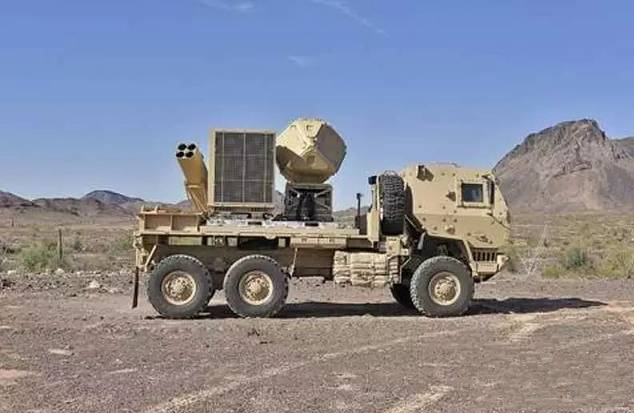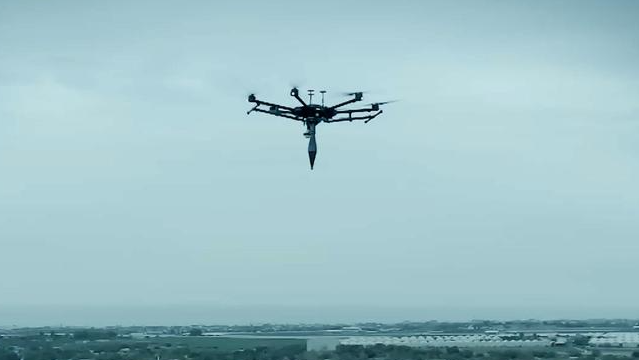Why is it difficult for radar systems to detect drones?

Indeed, the detection of drones is a technological challenge, especially in the face of the growing threats of miniaturization, low cost, and high-performance drones. Let’s explore in detail several difficulties in drone detection:
1. Miniaturization and stealthiness: With the advancement of technology, the design of drones is increasingly inclined towards miniaturization, which not only reduces their radar cross section (RCS), i.e. radar scattering area, but also allows them to fly at lower altitudes without being easily detected. The characteristic of low altitude flight means that drones can use terrain and buildings to block their signals, thereby avoiding being captured by radar. In addition, in urban environments, high-rise buildings and other obstacles frequently block the radar line of sight, causing drones to only briefly appear in the radar field of view and then quickly disappear, increasing the difficulty of tracking.
2. Maneuverability and hover capability: Drones have a high degree of flexibility and can perform complex flight operations such as sharp turns, rapid ascent or descent. This irregular motion pattern is a huge challenge for traditional radar systems. Traditional radar systems are typically designed to track large targets on fixed flight paths, such as airplanes or missiles, while the non-linear flight paths and sudden changes in flight status of drones often exceed the expectations of these systems. Especially when the drone is hovering or performing vertical takeoff and landing, due to its relatively stationary nature, the radar reflection signal may become very weak and almost indistinguishable from background noise, which is particularly difficult for radar systems that rely on the Doppler effect.
3. Complex background noise: In practical applications, radar environments are much more complex than laboratory conditions. Drones may appear in various environments, from busy city centers to remote mountainous areas, and even vast ocean skies. These different environments will generate a large amount of background noise, which can interfere with the normal operation of the radar. For example, in urban environments, in addition to natural building reflections, there are countless signals emitted by artificial electronic devices such as mobile phone base stations, Wi Fi routers, and other wireless communication devices, which can form electromagnetic noise and affect the performance of radar. In natural environments, terrain undulations, vegetation cover, and weather changes can also interfere with radar signals. Therefore, developing technologies that can effectively filter out these background noises and accurately identify drone signals is the key to improving drone detection efficiency.
4. Application of stealth technology: The development of drone stealth technology is an important aspect of modern military technology, with the main purpose of reducing the probability of drones being detected by enemy detection systems through a series of technical means. This includes but is not limited to the use of radar absorbing materials (RAM), which can absorb radar waves instead of reflecting them, significantly reducing the visibility of drones on radar screens. Invisible coatings also play an important role, as they can further reduce the reflectivity of radar waves, making it more difficult for drones to be detected. In addition, the application of non-metallic and composite materials is also one of the key factors in achieving stealth of drones. These materials are not only lightweight, but also have good transparency to radar waves, which helps reduce the reflection of radar signals. In addition to material selection, the design of drones is also crucial. By adopting special geometric designs, such as inclined body surfaces and edges, radar waves can be effectively scattered in different directions instead of directly reflecting back to the emission source, greatly reducing the chance of being captured by the radar system. Meanwhile, optimizing engine design and applying thermal radiation coatings can effectively reduce the thermal signal of unmanned aerial vehicles and minimize the possibility of being captured by thermal imaging radar and other infrared detection systems. The above-mentioned stealth technologies can be used alone or combined to form multi-level stealth strategies to minimize the risk of unmanned aerial vehicles being detected. However, it is worth noting that although these stealth measures can significantly improve the survivability of drones, it does not mean that drones can completely avoid detection. In fact, with the continuous advancement of detection technology, how to maintain the stealth advantage of drones remains a continuous technical challenge.

5. Multi target tracking: With the popularization and development of drone technology, modern battlefields often face the situation of multiple drones appearing simultaneously. This is a huge challenge for radar systems, as they not only need to be able to identify and track individual targets, but also accurately distinguish multiple different drone targets in complex electromagnetic environments. To ensure effective defense, Counter Unmanned Aircraft Systems (C-UAS) need to have extremely high precision, minimizing false positives and avoiding false negatives as much as possible. The balance between the two is extremely delicate and difficult to achieve. On the one hand, the C-UAS system must be sensitive enough to promptly detect and track all potential threats; On the other hand, if the system is too sensitive, it may lead to frequent false alarms, consume valuable resources, and potentially disrupt normal operational processes. In practical applications, accurately distinguishing the real threat targets in a complex environment often requires a significant investment of human resources for analysis and support. This process is not only time-consuming, but also increases the operational complexity and cost of the system.
6. Cost and resource constraints: Although there are various advanced radar technologies that can improve the efficiency and accuracy of drone detection, the development and application of these technologies often come with high costs and huge demands for computing resources. For example, high-precision radar systems are not only expensive, but also require strong backend support to process massive data streams, which is a significant burden for many countries and organizations. In contrast, drones can be widely produced and deployed due to their low manufacturing costs and low technological barriers, making countering drones a long-term and highly challenging task.
In addition, in order to overcome the limitations of a single technology and improve the detection capability of drones, it is usually necessary to combine radar systems with various detection methods such as electro-optical, infrared, and radio frequency. Although this multimodal detection method can provide more comprehensive information, it also increases the complexity and cost of the system accordingly. Therefore, while considering how to effectively respond to drone threats, finding more cost-effective solutions has become one of the research focuses.
